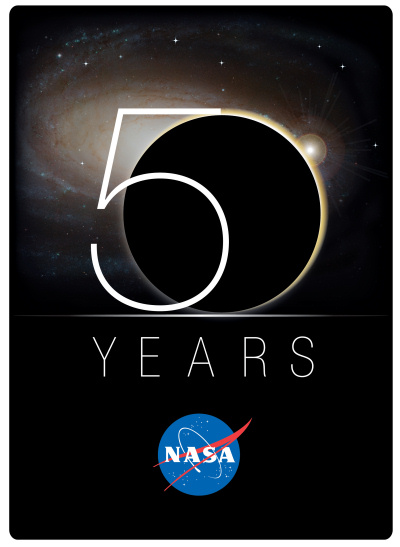Fifty years ago this week NASA was born. On July 29, 1958, President Dwight D. Eisenhower signed into law the “National Aeronautics and Space Act of 1958.” NASA replaced NACA, the National Advisory Committee for Aeronautics, to meet the challenge of exploring beyond Earth, and in particular, to send a human into space. NASA has accomplished a lot during the last 50 years, and now its time to celebrate. To commemorate the anniversary, NASA has developed an interactive multimedia website that provides a historic tour of its first five decades of exploration. It’s a fun and interesting site that offers lots of history and a little look at the future, too. The site combines historic and current video with entertaining computer animation, and the virtual exhibit takes a World’s Fair approach to NASA history, with pavilions that host each decade of NASA’s achievements and challenges.
Begin your personal tour here….
“We’re very excited to have people come and take a look at NASA’s history,” said Brian Dunbar, NASA’s Internet services manager at Headquarters in Washington. “We’ve been able to take a wide range of material and weave it into a virtual tour that allows people to explore at their own pace.”
Here are a few things you can see in this virtual tour:
• Interior 3D views of John Glenn’s Friendship 7 Mercury spacecraft
• The original April 1959 press conference introducing the Mercury astronauts
• A tour of the International Space Station
• Video presentations about NASA’s aeronautics programs
• An interview with former CBS news journalist Walter Cronkite
• A presentation of the Voyager and Viking missions hosted by an avatar of the late Carl Sagan


Sorry guys, but you’ve messed up the hyperlink. you’re missing a slash(/). Should read http:// etc.
Congratulations, NASA. Much as the US administration is an easy target for ridicule & nay-sayers, even I must admit, there’s been some spectacular projects over the years, many of which helped to form the backdrop of my own childhood & interst in what’s @out there’
Okay, it was brought about in part as a direct result of Cold War politics, but in many ways, it’s become so much more.
Very few countries can say they have had such a long, dedicated (& some will say expensive) space development & exploration program.
Even in the age of international collaborations, the fact that NASA stil exists to this day, is in some way a testament to the people that work there.